Genesee County keeps on truckin' with Corona Convoy
Genesee County came together today to remind ourselves we are a community, to thank those who work hard to keep our economy going in these tough times, and raise money for Crossroads House.
More than 160 truckers met at Scofield Roll-Off in Stafford for the Corona Convoy, an event organized by Bruce Scofield and friends.
The video contains shots from members of the community throughout Genesee County who stood roadside to wave and honor the men and women who keep the economy rolling.
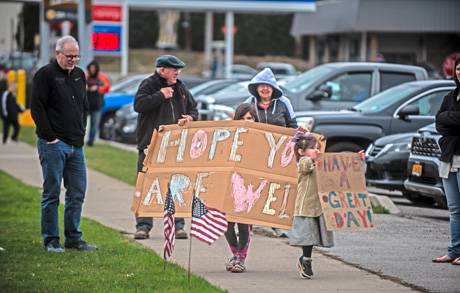
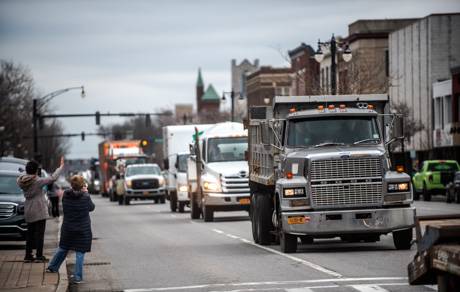
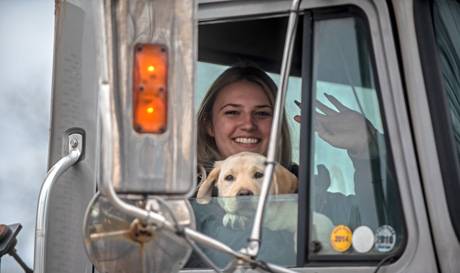
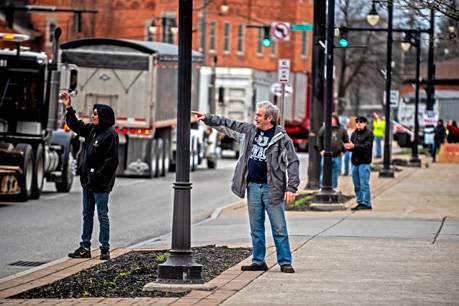
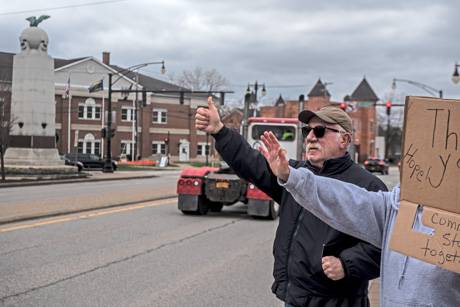
\
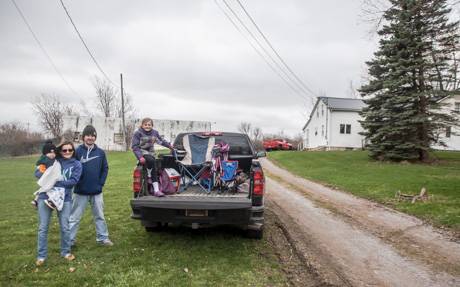
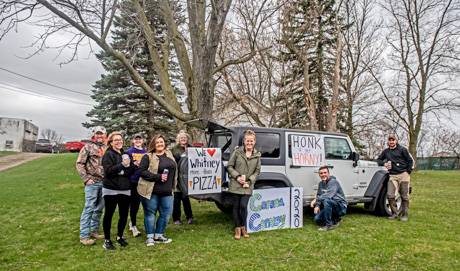
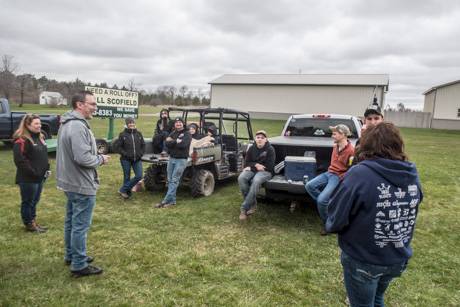
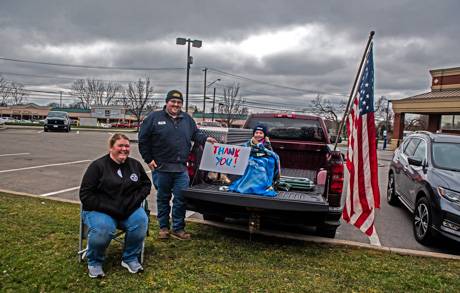
Poetry Month: Wendy Williams reads Sonnet 43 by Elizabeth Barrett Browning
Our second poem posted today because I didn't get to it on Friday and Saturday. Tonight, Wendy Williams reads Sonnet 43, "How Do I Love Thee," by Elizabeth Barrett Browning.
Williams is a member of Batavia Players.
You, too, can read a poem for us on The Batavian. Submit your video to howard@thebatavian.com.
April is National Poetry Month.
VIDEO: During briefing, Cuomo was asked to address WNYers concerned about moving ventilators Downstate
During today's briefing, Gov. Andrew Cuomo was asked a question by a reporter about his executive order and what he has to say to residents of WNYer who might be concerned about this order. Here's his answer.
NOTE: I didn't start a screen capture video of the governor's answer until about a minute into it and my audio wasn't very good. Thank you to the governor's press office for providing the full audio to the question and answer. So, the video starts out with a static screen but at least it's the complete question, follow-up question, and answers.
Please send us your videos of the Corona Convoy
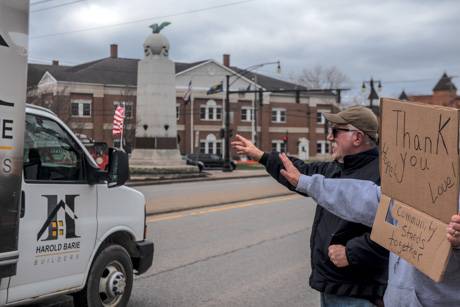
The Corona Convoy, honoring the workers, especially truckers, who keep our economy rolling even in tough times, rumbled through Genesee County today.
We'll have photos and video later but I'd really like to supplement the video I shot with the video you shot. If we get enough submissions, we should be able to cover the convoy's entire route through the count.
Send your short video clips to howard@thebatavian.com. For longer clips, use wetransfer.com (enter the same email address in the form). Please try to send the video within the next couple of hours.
Poetry Month: Pat Burk reads Cat Morgan introduces himself by T.S. Eliot
Pat Burk reads Cat Morgan introduces himself by T.S. Eliot.
Burk is the executive director of Batavia Players and helped recruit members of Harvester 56 Theater to provide us these poetry readings.
April is National Poetry Month.
T.S. Eliot is one of my favorite poets. In his classic, "The Waste Land," Eliot began with the observation, "April is the cruelest month."
Video: Palm Sunday message from Pastor Roula Alkhouri, Batavia First Presbyterian Church
Video: Palm Sunday message from Pastor Roula Alkhouri, Batavia First Presbyterian Church.
Video: Gov. Coumo's briefing for April 5, 2020
Press release:
A rush transcript of the Governor's remarks is available below:
Good morning. Happy Sunday. For those of you who celebrate Happy Palm Sunday. Happy Passover week for those who celebrate Passover. Thanks for taking the time to be with us today. We want to give you an update as to where we are.
The number of cases increase which is nothing new. It's happened every day since we've started this. It's been a long month. Something a little bit different in the data today. We're not really 100 percent sure yet what the significance is as we're feeling our way through this.
Number of people tested, 18,000. Positive cases are up 8,000, total of 122,000 cases. Number of patients discharged, total discharged is 12,000 - 1,700 discharged in one day. Number of deaths is up. That's the bad news. It's 44,159 and we pray for each for each and every one of them and their families and that is up and that is the worst news.
But the number of deaths over the past few days has been dropping for the first time. What is the significance of that? It's too early to tell. This is the impact by state. But as I said the interesting blip maybe in the data, or hopeful beginning of a shift in the data and the number of cases, total number of new hospitalizations is 574 which is obviously much lower than previous numbers. That's partially a function of more people being discharged but you see ICU admissions are also down. The daily intubations down slightly from where it was. Again, you can't do this day to day. You have to look at three or four days to see a pattern.
Discharge rate is way up and that's great news and the statewide balance of cases has been relatively stable for the past few days. There is a shift to Long Island. Upstate New York is basically flat and as Long Island grows the percentage of cases in New York City has reduced.
For those people who look at the data, you have all these projection models and what's been infuriating to me is the models are so different that it's very hard to plan when these models shift all the time. But there's also a difference of opinion on what happens at the apex. All the models say you go up until you go down - thank you very much. Then there's a difference of, is the apex a point or is the apex a plateau. In other words you go up, hit the high and the immediately drop, or do you go up and then there's a plateau where the number of cases stays high for a period of time and then drops? There's a difference of opinion.
So you have to think about that when you think about what you're seeing in the numbers because you could argue that you're seeing a slight plateauing in the data which obviously would be good news because it means you plateau for a period of time and then you start to come down and we're all feeling our way through this and we have the best minds in the country, literally on the globe, advising us because New York is the first. I also think it will be very helpful for the other states that follow. I was just talking to Dr. Zucker about codifying everything we're learning because when the next states start to go through this we hope that they can benefit from what we're going through.
But we're looking at this seriously now because by the data we could be either very near the apex or the apex could be a plateau and we could be on that plateau right now. We won't know until you see the next few days. Does it go up, does it go down, but that's what the statisticians will tell you today.
As we've said before, the coronavirus is truly vicious and effective at what the virus does. It's an effective killer. People who are very vulnerable must stay isolated and protected. I mean, that was the point from day one. That was the point with Matilda's Law, my mother. You have to isolate and protect those people. If a very vulnerable person gets infected with this virus, the probability of a quote unquote "cure" is very low. And that's what this has really been about from day one. That small percentage of the population that's very vulnerable. Major effort that has impacted everyone to save the lives of those people who are in the very vulnerable population. If you're not part of that vulnerable population, then you will get sick, 20 percent require hospitalization, but the hospital system is very effective and it makes a real difference. And that's why the highest number of people ever now being discharged, right.
So you're just seeing the evolution of this whole story. You're seeing the narrative unfold, right. We're all watching a movie, we're waiting to see what the next scene is, and as the movie unfolds you start to understand the story better and better. Rush of infection rate, rush of people into the hospital system, hospital system capacity explodes, more people are in, but, more people are coming out. 75 percent of those people who have now gone into the hospital system are coming out of the hospital system. It also helps with the capacity of the hospital system because obviously the more people who are coming out, it makes it easier to handle the large influx that's coming in.
Having said all of that, the operational challenge for the healthcare system is impossible. Because the system is over capacity, all across the board. It's just over capacity. So what we're basically saying to a system is you have to manage with the same resources that you have, same staff, an over-capacity situation. And that is putting a tremendous amount of stress on the healthcare system. You're asking a system to do more than it has ever done before, more than it was designed to do with less. I understand that. I get that. Day in and day out, the commissioner and everyone at this table deals with the healthcare system. I understand what they're dealing with. I understand they're being asked to do the impossible. And they are being asked to do the impossible. But, life is options and we do not have any other options. So you get to a situation and you do what you have to do in that situation. And that's where we are. The only operational plan that can work, right, because you know the system doesn't have the capacity, doesn't have the supplies, doesn't have the staff. So how do you handle this surge over capacity?
We call it, we have to surge and flex, which means you have to deal with, if you're an individual hospital or hospital network, yes, you're going to be over capacity. And the only way we can make this work is if we flex the system so that we take all hospitals, all hospital networks, some hospitals are in networks, and we work together as one system, which has never been done, right. We have public hospitals. We have private hospitals. We have Long Island hospitals. We have New York City hospitals. In totality, it's the health care system, the state manages, regulates the healthcare system, but they're all individual hospitals. And, or individual networks. And they are accustomed to just doing business and managing their own affairs. That doesn't work. We have to balance the patient load among all of these hospitals. So if one hospital starts to get high or has a protected high intake, we have to shift that patient load to other hospitals. That means some patients who show up at their neighborhood hospital may be asked, can we transport you to another hospital, which is not in your neighborhood, but actually has more capacity. So we have to adjust that patient load among all of the hospitals, which is a daily exercise and it's very, very difficult.
We're running short on supplies all across the board. Some hospitals happen to have a greater supply of one thing or another. One hospital has a greater supply of masks, one hospital has a greater supply of gowns. And when we're talking about supply, hospitals are accustomed to dealing with a 60-day supply, 90-day supply. We're talking about 2 or 3 or 4 day supply, which makes the entire hospital system uncomfortable, which I also understand because we're literally going day-to-day with our supplies, with out staff, et cetera. Which is counter-intuitive and counter-operational for the entire health care system and I understand that also.
The big operational shift will be Javits coming online if we get that up and running efficiently. That's 2,500 beds for people who test positive with the COVID virus. That is a major shift for the systems and at a time when we desperately need a relief valve for the system, Javits could do that. We're working very hard to get that up and running. That rolling deployment, that flexibility - there is no other way to do this on the state level. I can't say to a hospital, I will send you all the supplies you need. I will send you all the ventilators you need. We don't have it. We don't have them. It's not an exercise, it's not a drill. It's just a statement of reality. You're going to have to shift and deploy resources to different locations based on the need of that location. I think that's going to be true for the country. The federal government everyone says federal stockpile, federal stockpile. There's not enough in the federal stockpile to take care of New York and Illinois and Texas and Florida and California. It's not an option. The only option I see is there's a national deployment - everyone says this is wartime, it is a war and the virus is the enemy - where help New York today, thank you state of Oregon, we're dealing with this curve today and this intensity and then nationally, we shift the resources to the next place that is most impacted.
Just what we're doing in New York City and New York State on a microcosm, we shift resources from the Bronx to Brooklyn to Queens to Nassau. Shift national resources and state resources from New York to Florida to Illinois, whatever is next on the curve. We're going to do that in any event. We get through this, people have been so beautiful to us and it is the New York way. We're going to codify everything we've learned and when we get past this curve, whatever part of the country goes next, we will be there with equipment and personnel and however we can help.
Federal government is also deploying approximately 1,000 personnel to New York. That's doctors, that's nurses, that's respiratory technicians. The immediate priority is to deploy those people to help the New York City public hospitals. The New York City public hospital system, H&H, was a system that was under stress to begin with before any of this. So obviously, you add more stress to institutions that were under stress, it only makes the situation more difficult so we're going to deploy all the federal personnel who are coming in today, 325, to the New York City public hospital system.
I talk to the hospital administrators on a daily basis. We get them on a conference call and we do this shifting of supplies and balancing of patient load. I know that I'm asking them to do really difficult things, I get it. I don't enjoy being in this situation. I don't enjoy putting them in this position. I know their staff is all over burdened, but all I can say is thank you to the administration of this health care system and most importantly thank you to the frontline workers. These people, they are true heroes in the truest sense of the word, what they do day in and day out under very difficult circumstances, and we thank them all.
On a different and somewhat lighter note, there is an accompanying affliction to the coronavirus that we talked about early on. It is cabin fever. It is a real situation. Not medically diagnosed, I asked Dr. Zucker there is no medical diagnosis for cabin fever, but I believe it exists. It is a feeling of isolation. It is often accompanied by radical mood swings, resentment of people around you to varying degrees, for no reason whatsoever. Just an upwelling of resentment, especially toward people who are in apparent positions of authority in this situation which I've noticed. Irrational outbursts can come at any time, without any warning. Just an irrational outburst, frustration, anger, with no rational basis. Cabin fever, in many ways, also threatens the essence of our Constitution, which is premised on people sharing domestic tranquility and it can be disruptive to tranquility. I can attest to that. It is a real thing. Think about it. It has only been one month but it has been a long month.
Positive intervention for cabin fever, I am going to take up running again. I used to run in the normal days before this job. But I am going to start running again. My daughter Cara, we will run as a family and go out there. Cara has a head start. She is out there doing five miles every day. She thinks she can beat me. Give me a couple of weeks and I will be right there, right there. Fast like lightning. We are going to do it. We will make the dog come. The dog is also experiencing cabin fever. He's a little disrupted. The order of the pack has changed. Different people, he does not know where he fits. He has anxiety. He is going to run. Think of ways to deal with it. I don't have any great answer.
But a little perspective on the whole situation is important. I challenged my daughters, this is terrible, this is terrible, this is terrible. I have been saying this is terrible for society, the economy and personally. But, you know, let's look back at history, right? Generations have gone through terrible times. So, my challenge to them is you find me a generation that has had a better overall situation than where we are right now. Go back to World War I, World War II, Vietnam, 1918 flu pandemic, you find me a generation that has not had a challenge to deal with and we will are going to have that discussion. Keep in mind on perspective. This is going to be over. You can see the story developing. You can start to see how the story ends, right? They will have a vaccine. Will it be 12 months or 14 months or 18 months? There are a number of treatments that are being expedited and are being tested right now. Dr. Zucker of New York is working expeditiously and cooperatively with the FDA to try all new different treatments: convalescent plasma, receptor antibody treatments, we are working on the hydroxychloroquine - we are working on it aggressively. So, we are trying all these new treatments. Some of them show real promise. But, you can see where the story ends.
I think, this is opinion and not fact, I think you see the return to normalcy when we have an approved rapid testing program that can be brought to scale. We are now testing rapid testing programs. But, when you get to the point where you can do rapid testing, of scale, and people can start to go back to work because they know they are negative. We continue to protect the vulnerable population, which is what this was about, and we liberate, as my daughters would say they are seeking liberation. We liberate people who can go back to work because we know that they are not in the vulnerable category and they are negative. I think that is, it is under development now, the rapid testing, and we are part of it. That is going to be the answer, I believe. And we get through it because we are New York State tough. Thank you.
Photo: Bald Eagle in Oakfield

Submitted by Taylor Burr.
Cuomo executive order on ventilators and PPE stokes fears, stirs up controversy in WNY
The executive order Gov. Andrew Cuomo said yesterday he was going to sign requiring Upstate hospitals to ship some of their ventilators and personal protective gear Downstate has caused a firestorm of opposition in Western New York.
Elected leaders and aspiring candidates have weighed in with their objections and social media posts have exploded in debates about the policy.
The rising consensus is that once again, Cuomo is putting the needs, desires, and priorities of urban Downstate residents over their rural fellow citizens.
The Batavian made multiple attempts to reach out to the governor's office to ask four questions we thought might help clarify things for readers:
- We want to know: Who determines and defines "excess"? Our public health director, Paul Pettit, said yesterday that between Orleans and Genesee Counties, there are 11 ventilators. While none are currently being used for COVID-19 patients, he doesn't know how many are being used to treat other respiratory illnesses. He is concerned that when the coronavirus outbreak reaches its peak here, local hospitals will need 100 ventilators. "That's why we don't feel we have an excess that we can offer up to Downstate," Pettit said.
- As for personal protective equipment (PPE), there are ongoing concerns about a shortage of gear in our own county (though another shipment arrived yesterday), so the same question applies: How and who determines if there is an excess of PPE in Genesee County?
- What guarantee can the governor offer that if ventilators are needed here, that there will be an immediate and timely backfill of any ventilators removed from our area?
- What is the calculation, has one been done, or what is the projection that we can rely on, that will assure us that Downstate's apex will subside before one in GLOW begins?
Late today, a member of the press office responded and pointed us to comments by Cuomo that he said should satisfy the first question.
To the first question, what defines "excess"? Today in his briefing Cuomo said, "So, what do we do? We find what equipment we have, we use it the best we can. If you ask hospitals today what ventilators do you have that are unused and available that they don’t need in the short term and take 20 percent of that number of available ventilators, that’s 500 ventilators."
To the overall scope of the questions, the aide pointed to Cuomo's discussion about Oregon assisting New York in its time of need.
The State of Oregon has lent us 140 ventilators. It was kind, it was smart, stop the virus here. It's better for the state of Oregon, it's better for the nation. Their curve comes after ours. We'll return their 140 ventilators, and there's never been a discussion, but frankly, I know New Yorkers and I know New Yorkers' generosity. We will turn it double fold because that's who we are and that's what we believe. So, stop the fire in New York, kind, generous, also smart.
The governor's office estimates that New York needs 17,000 ventilators total. It's unclear how many the federal government has or will send. There are efforts underway to hook up two patients at a time to a single ventilator. They are also efforts to use anesthesia machines and a machine called a BiPAP (similar to a CPAP used to treat sleep apnea but adjusts to the inhale and exhale of the person wearing the mask).
Also, Cuomo announced today that Joe Tsai and Clara Tsai and Jack Ma, co-owners of Alibaba (China's largest e-commerce company) have purchased 1,000 ventilators and are sending them to New York.
The news about the number of ventilators Cuomo plans to transfer from Upstate to Downstate and the gifts from Oregon and China is a level of detail not part of Cuomo's announcement yesterday to take ventilators from Upstate.
Cuomo's statement on Friday:
I'm not going to get into a situation where we're running out of ventilators and people are dying because there are no ventilators but there are hospitals in other parts of the state that have ventilators that they're not using. I'm just not going to allow us to go there. I think it would be wholly irresponsible. I'm going to sign an executive order that says the state can take ventilators and PPE from institutions that don't need them now and redeploy them to other parts of the state and other hospitals that do need them. Those institutions will either get their ventilator back or they will be reimbursed and paid for their ventilator so they can buy a new ventilator.
That caused alarm bells in some quarters. Even Paul Pettit, in his mild-mannered way, expressed concern.
"Obviously, taking and removing any level of our ventilators or taking and removing any of our PPE that we have from our region or any region in our state is something that we have grave concerns about," Pettit said, sharing that Dan Ireland at UMMC shared his concern.
Noting that with COVID-19 cases are on the rise locally, our community needs its emergency supplies and staff.
"The last thing we want to do is get in a situation where our availability of PPE, our availability of respirators, any of those things, are not available for us when our peak, when our apex comes in the next two or three weeks," Pettit said. "I understand what the governor is trying to accomplish, that they have a need down there right now but I don’t want our communities to be in a very precarious and unfortunate situation that when ours comes we don’t have the type and level of respirators and PPE we need to respond effectively to help keep our folks, our residents in our counties safe. So, it is a big concern."
We asked Ireland to comment and said UMMC is working to ensure the hospital remains ready for whatever may come.
Rochester Regional Health, including UMMC, is working collaboratively with local, regional and state agencies to ensure that necessary resources are available where and when they are needed to care for all patients who require hospital care. At this time, UMMC has not been asked to divert equipment or resources Downstate and we stand ready to serve our community as we have been for over 100 years. We are grateful that the residents of our community are flattening the curve by staying home so that, together, we can stop the spread of the virus and keep our community at-large in good health.
Assemblyman Steve Hawley yesterday, blasted Cuomo's order.
"It’s the worst possible management of this crisis I have seen thus far, and I am asking the governor to rescind his Executive Order," Hawley said. "Upstate and Western New York lives matter.”
All of the Republican candidates for the NY-27's congressional race chimed in.
Most notably, Chris Jacobs, who is currently a state senator and the GOP-endorsed candidate in the special election to replace convicted criminal Chris Collins (the special election has been moved from April to June 23, the same date as the GOP primary), put out a tweet yesterday that claimed Buffalo General Hospital had already been forced to surrender 30 ventilators.

The tweet was later deleted.
Kaleida Health issued the following statement about "social media rumors."
Michael P. Hughes, chief of staff, Kaleida Health said, “The rumors that have circulated on social media are completely false. The National Guard was not at Buffalo General Medical Center or any of our other hospitals. Nor were ventilators or supplies taken from us. This type of misinformation only causes further panic and chaos in a time of great uncertainty. That said, we still vehemently oppose the Governor's executive order to take 20 percent of Upstate hospitals' equipment and supplies. We will continue to fight this in an effort to protect our patients as well as our physicians, nurses, and staff during this pandemic."
Stefan Mychajliw, one of the candidates challenging Jacobs in the GOP primary put out a press release attacking Jacobs over the tweet.
“People are scared," Mychajliw said. "Our community is panicking. Young and old are fearful of dying. Many people lost their jobs. The last thing we need is someone falsely fanning the flames of discord just to score a few cheap political points in the middle of a campaign. Chris Jacobs must apologize for this false, reckless and irresponsible claim.”
The Batavian emailed the Jacob's campaign about the tweet, at a time when we were still trying to confirm it (as the screenshot above shows, we did find the original tweet) but did not get a response.
Jacobs had earlier put out a press release about the governor's executive order.
“The Governor has made it very clear that NYC is the starting point for COVID-19, but that a wave could very well travel across our state and hit Western New York," Jacobs said. "By taking away our vital medical supplies, the Governor is directly putting all Western New Yorkers at risk. When we don’t have the resources to fight COVID-19 here, we will lose Western New York lives.”
Beth Parlato, also a GOP challenger in the primary, responded to the governor's executive order by launching an online petition at wnylivesmatter.com/.
“Governor Cuomo issued an executive order that he is taking ventilators from Upstate New York to bring to New York City," Parlato said. "He is deploying the National Guard to remove essential supplies from our hospitals to take Downstate. We need these ventilators in Western New York to fight COVID-19! WNY medical professionals have been working tirelessly over the past few weeks, and they are running out of supplies. It is critical that our needs are considered."
With all of the announced GOP candidates for the NY-27 weighing in on the executive order, we sought a comment from Nate McMurray, the endorsed Democratic candidate in the special election and did not get a response.
While many of Cuomo's long-standing critics in WNY lined up to call Cuomo dictatorial, it hasn't been a sentiment that has been universally shared among conservative WNYers.
Republican operative and former Trump campaign aide Michael Caputo, for example, has posted several tweets supporting Cuomo's order.
We rely upon local pols to defend our rights and resources. With their focus, we will have the ventilators we need, when we need them. Leaving them in closets while Downstaters die is a disgusting alternative.
— Michael R. Caputo (@MichaelRCaputo) April 3, 2020
I'm as anti-Cuomo and anti-NYC as they come. I won't stoke this.
I trust WNY local leaders to assure we have the health resources we need, when we need them. Denying Downstate critical cases our resources, which are sitting in closets, is disgustingly inhumane. This statement from Erie County GOP leaders shows they are on top of it. pic.twitter.com/sJXXBKq6xD
— Michael R. Caputo (@MichaelRCaputo) April 3, 2020
UPDATE 12:21 a.m.: McMurray provided the following statement:
The order reads, “from institutions that don't currently need them and redeploy the equipment to other hospitals with the highest need.” Some have tried to use scare tactics, to divide us, saying this means the governor will try to raid hospitals with ventilators already in use. My opponent, Chris Jacobs, lied saying Buffalo General Hospital was already raided, but later deleted his comment.
This is a time for bravery and cooperation, not scare tactics. Oregon sent ventilators to NYC, yet officials in Western New York are reluctant. It makes no sense. We are in this together. New York City’s fight is our fight. We need to try and stop the fire there before it spreads here. It’s one state, one country, and within our means, we must assist with the hope that Albany and New York will share other resources later. We do not want to go this alone, nor can we.
The real issue is our national response. Our President tells us we have enough tests and ventilators every day. Clearly we do not. It’s sad that it’s state vs. state, county vs. county because we have no national plan or vision.
Three new COVID-19 positive cases reported in Genesee County
Press release:
he Genesee and Orleans County Health Departments have received three more COVID-19 cases. Orleans has two new cases and Genesee has one. There is currently no further information to release on ages and locations. Mapping will be updated on Monday after the press the daily press briefing.
Contact tracing has been initiated.
Video: Redfield Parkway residents donate meals to Tops employees
The residents of Redfield Parkway came together and raised money to cater meals to the employees of Tops Market in Batavia from T.F. Brown's and Los Compadres.
Video shot by Alecia Kaus/Video News Service; edited by Howard Owens.
Caller complains about 'loud vehicles off-roading' in Byron, deputies dispatched
A caller to dispatch complained about "loud vehicles off-roading" in the 6100 block of Walkers Corner Road in Byron. Genesee County Sheriff's deputies are responding.
Batavia City Council to conduct video conference Business Meeting on April 13
Batavia City Council, as is the case with other Genesee County municipal boards, has decided to “zoom” into the world of electronic meetings.
City Council President Eugene Jankowski told The Batavian today that his group’s next Business Meeting will take place at 7 p.m. on April 13 via the video conferencing service, Zoom – with all council members remotely joining the proceedings by using a specific meeting ID and password.
Zoom Video Communications, headquartered in San Jose, Calif., provides a remote conferencing service that combines video conferencing, online meetings, chat, and mobile collaboration.
“We’ve been experimenting with Zoom – testing it and getting instruction about the software – and everyone seems to be on the same page,” said Jankowski, noting that city lawmakers need to meet to “keep things moving forward,” especially since the March 23rd meeting was cancelled due to the COVID-19 Pandemic.
Jankowski said he expects some logistical glitches at first, but is confident that the expertise of Alecia Kaus of Video News Service will go a long way in making the board’s first venture into the electronic age a successful one.
“We’re going to televise it through Video News Service so the public can watch, but they won’t be able to interact … there will be no public (question-and-answer) session,” he said. “We will, however, definitely allow for the public to send questions by email afterwards (to City Manager Martin Moore or to any council member).”
When contacted about the setup, Kaus said that she plans to post the meeting on her Facebook page and YouTube link – something that she normally does – and is open to putting it on other Internet sites as directed by City Council.
“I will be recording it live and airing it not long afterwards,” she said. “I am currently doing that for Spectrum (on its Community Access Channel) for the City and for the Town of Batavia, and I also have been recording the (Genesee County) Health Department meetings and putting them up for everyone to see.”
The Genesee County Legislature also is utilizing Zoom for its full legislature and committee meetings and posting them to YouTube. Its next meeting (a regular session) is scheduled for 5:30 p.m. on Wednesday.
Photos: Community chips in to feed hospital staff
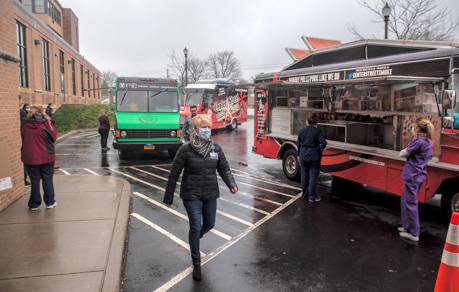
Staff at UMMC received a free lunch paid for by community donations organized by Ben Macdonald to thank them for "strength, courage, and service" during this difficult time.
Macdonald started a GoFundMe campaign last week with the goal of reading $2,000. The community contributed $3,325.
Workers were served lunches from food trucks for Center Street Smoke House and Public Coffee Hub.
Social distancing was maintained throughout the food service.
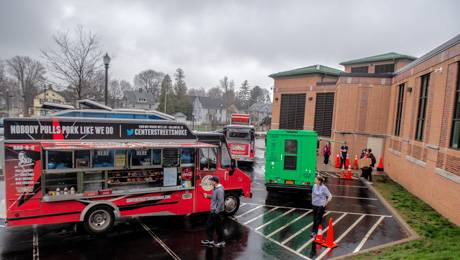
GV Educational Partnership donates badly needed personal protective supplies to Emergency Management
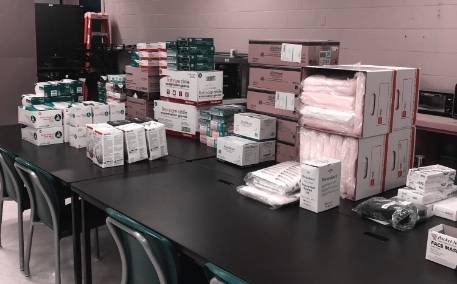
Submitted photos and press release:
When a crisis occurs, it is vital that communities collaborate. This week, the Genesee Valley Educational Partnership (GVEP) made a significant donation to both the Genesee and Livingston counties' Emergency Management systems.
These donations amounted to thousands of Personal Protective Equipment (PPE) including gloves, disposable gowns, hand sanitizer, surgical masks, N95 respirator masks, blood pressure cuffs and alcohol prep pads.
While schools are closed, these items will be benefit local communities in the fight against COVID-19.
“Our nation is facing a pandemic that we have never encountered before," said Matt DellaPenna, GVEP director of Safety and Security. "These supplies will help to protect the brave first responders and healthcare workers who are on the frontlines of this COVID-19 outbreak.”
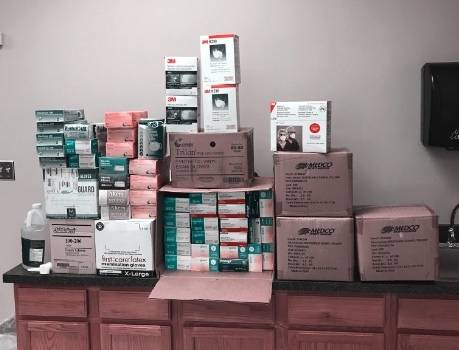
Law and Order: Pair of arrests in the city after domestic incidents
Quentin I. Bloom, 22, of North Spruce Street, Batavia, is charged with criminal contempt in the first degree and second-degree harassment. Bloom was arrested after a domestic incident at 2:18 a.m. March 31 at an upper apartment on Edward Street in Batavia. It is alleged that he struck a person who had an order of protection against him. Bloom was arraigned in Batavia City Court at 7:01 a.m. on March 31 then put in jail on $2,000 cash bail, $4,000 bond, or $8,000 partially secured bond. He is due back in court on April 27. The case was handled by Batavia Police Officer Stephen Cronmiller, assisted by Officer Alec Roberts.
Michael R. Lanze, 30, of Pearl Street, Rochester, is charged with criminal contempt in the second degree and burglary in the second degree. Lanze was arrested after an investigation and arraigned in Batavia City Court at 4:12 a.m. on April 1. It is alleged that he was found at 11:48 p.m. March 31 in the upstairs apartment on Hutchins Street in Batavia of person who had an order of protection against him. He was jailed on $500 cash, $1,000 cash bail, or $2,000 partially secured bond. He is due back in court on April 27. The case was handled by Batavia Police Officer Alec Roberts, assisted by Peter Flanagan.
Pavilion student-athete at Elmira College earns spot in Empire 8 Conference
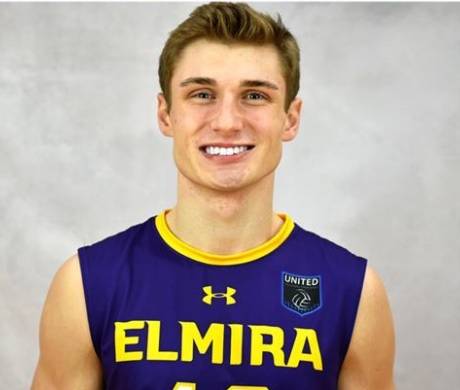
Submitted photo and press release:
Lukas Milligan, of Pavilion, was one of six Elmira College student-athletes recognized by the Empire 8 Conference.
Milligan (Class of '23), a volleyball player in Elmira's impressive rookie class, was selected to the Empire 8 All-Conference Second Team.
Milligan floored 125 kills with a 2.12 kills-per-set average, which was good for ninth in the conference. The Pavilion native and Pavilion High School graduate was deadly from the service line with a team-best 21 aces and set a single-match record with nine against Sage. On the other side of the ball, Milligan added a team-high 87 digs.
About Elmira College
Founded in 1855, Elmira College is a private, residential, liberal arts college offering 30-plus majors, an honors program, 17 academic societies, and 20 Division III varsity teams. Located in the Southern Finger Lakes Region of New York, Elmira is a Phi Beta Kappa College and has been ranked a top college, nationally, for student internships. The College is also home to the Center for Mark Twain Studies, one of four historically significant Twain heritage sites in the United States, which attracts Twain scholars and educators from around the world for research on the famous literary icon.
Citizens offer cookies for cops
Genesee County emergency dispatcher a minute ago: "There are some individuals in the lobby who have cookies for BPD."
City of Batavia Police officer buoyantly: "Received."
Pagination
- First page
- Previous page
- …
- 709
- 710
- 711
- 712
- 713
- …
- Next page
- Last page

